Common diseases and control of garden blueberries
Diseases of garden blueberry and the fight against them is a problem that summer residents sometimes have to face. Diseases lead to a decrease in yields, the case may even end in the loss of a shrub. That is why it is important to identify and eliminate the causes of infection in time.
Diseases of the culture can be of a fungal or viral nature, sometimes the pathological condition of the shrub is caused by improper agricultural technology. Treatment in each case is selected individually. You need to act quickly, as often the infection rapidly captures neighboring plants.
Causes and signs of various diseases
A complex of symptoms will help to accurately differentiate any disease. It is recommended to regularly inspect blueberries in order to detect signs of disease in a timely manner.
When infected with different types of fungus, the visible manifestations can be the same, regardless of what pathogen they are caused by. In this case, a broad spectrum fungicide should be used.
Why do the leaves turn yellow on the bush?
If blueberry leaves turn yellow, this is most often due to the plant being planted in the wrong soil and not receiving the necessary care. Yellowness appears one year after planting in neutral or alkaline soil.
In such a soil, mycorrhizal fungi cannot exist, the symbiosis with which helps blueberries to absorb nutrients. As a result, the bush begins to experience acute starvation. The growth of shoots is suspended, the leaves become small and yellow.
Top dressing will help to correct the situation:
- In the spring season - a complex soluble fertilizer under the root.
- Spraying on the sheet with a solution of low concentration urea (1 tsp per 10 liters of water). You will need to repeat the procedure after 2 weeks.
- Citric acid (0.5 tsp) or 9% table vinegar (100 ml) per 10 liters of water should be added to the water for irrigating blueberries.
- Additionally, you can scatter 1.5-2 tbsp under a bush. l. colloidal sulfur. The substance acidifies the soil and serves as a food source for blueberries.
If the measures taken did not give an effect and the bush still turns yellow, you need to transplant the plant into an acidic substrate in early spring. You can achieve an increase in soil acidity using high-moor peat and fresh sawdust.
Why do blueberries have pale green leaves?
Pale green blueberry leaves indicate that the plant is severely iron deficient. Experts call this condition chlorosis. The disease develops when the bush is planted in calcareous soil. On such lands, iron cannot be assimilated by a plant, since it is in a form inaccessible to it.
- A sign of developing chlorosis - when the leaves did not completely turn yellow, the veins remained green.
- With an advanced form of the disease, the leaves are completely pale, a drying border appears along the edge, and the tips become brown.
Signs of iron deficiency first of all appear on the upper young leaves, later the foliage in the lower part of the bush turns pale.
You can urgently help the plant by introducing suitable fertilizers:
- colloidal sulfur - 2 tbsp. l. granules for a bush;
- iron chelate. Top dressing is prepared by dissolving 12 g of citric acid and 8 g of ferrous sulfate in 3 liters of boiled water. First, the lemon is poured into the water. After the crystals are completely dissolved, vitriol is added. You should get a "rusty" liquid.
Insufficient fertilization, improper watering (excessive or scarce), imbalance of elements with an excess of manganese, copper, zinc, phosphorus can also lead to chlorosis.
Why does the blueberry bush dry?
Often, drying of shoots and fruits occurs as a result of infection with a fungal or viral infection. If you find symptoms of fungal infection at an early stage, you can get rid of the misfortune. Unfortunately, viral diseases are incurable.
Fungal diseases
Fungal diseases of blueberries are often provoked by high humidity, excess nitrogen in the soil, poor sanitary condition of the site, and thickened planting. Plants get sick if they are weakened, they do not have enough sun, there is no air circulation.
Most often, blueberries are affected by:
- Phomopsis. Fungus infection occurs at the tops of the shoots. Young twigs dry and curl. Dry and hot weather in spring helps spread the infection. In the absence of treatment, the bush dies.
- Mummification of berries. When blueberries are affected by the fungus Monilinia vaccinii-corymbosi, the crop dries up before reaching ripeness. The berries develop at first, but then mummify. At the same time, blackening of leaves and young shoots occurs. You can increase disease resistance by spraying the shrub in early spring with a solution of urea (400 g per 10 liters of water). An obstacle for the fungus will be a layer of mulch in the form of sawdust 5–7 cm thick.
- Powdery mildew. Due to the disease, the blueberry foliage becomes covered with white, gradually darkening spots and then dries up. Later, the fungus spreads to fruits and petioles. The disease greatly reduces winter hardiness and crop yield.
- Double spotting. The disease causes the leaves to dry out during the high season. The first symptoms on blueberries appear at the end of May. The leaves are covered with small gray spots about 3 mm in size. In case of humid weather favorable for the development of the disease in the middle of summer, the spots increase in size up to 15 mm. The disease spreads rapidly and affects the entire bush. As a result, the leaves dry up and fall off. The fungus is dangerous for other crops as well.
- White spot. The disease manifests itself by the appearance on blueberry leaves of many small light or "rusty" spots. Later, the affected leaves begin to dry out and fall off. To reduce the risk of contracting this disease, you can use timely mulching.
- Stem cancer. In addition to shoots, the disease also affects petioles and leaves. First, small red spots appear at the base of the leaves on young shoots. The lesions merge over time, which leads to the death of the leaves. Later, the bark becomes covered with brown ulcers with a raspberry border. In advanced cases, the bush dries up completely.
- Moniliosis. The disease is also called fruit rot. Under the influence of a fungal infection, the berries become as if frozen, and then dry out. The disease spreads quickly and results in the loss of the entire crop.
- Anthracnose. The defeat of the fungus causes the appearance on the leaves of reddish, black, brown spots of various sizes and shapes. On young stems, anthracnose manifests itself as brown ulcers. Flowers and berries can also be affected. Dents appear on the fruits, their surface wrinkles. Affected shoots dry up and turn light brown. At temperatures below 15 ° C, the disease subsides.
Fungal infections are treatable. It is important to take action at an early stage of the disease.
Viral diseases
In addition to fungal diseases, viral infections can lead to premature death of the shrub. Among them:
- Mosaic. The disease manifests itself by the appearance of a mosaic pattern on the leaves, then the leaf plates turn completely yellow.
- Dwarfism. The disease is caused by a mycoplasma virus. The bush stops growing and developing, the berries acquire an unpleasant taste, the foliage turns yellow and falls off prematurely.
- Red annular spot. Pink spots with red edging appear on the leaves. With an advanced stage of the disease, the leaves turn completely red and die off.
- Filamentous shoots. The disease is insidious in that it lasts for a long time. In the active phase, blueberry growth slows down, leaves turn red. A little later, the leaf plates twist and crumble. Young shoots are covered with characteristic thin stripes.
Viral diseases are transmitted through infected seedlings, insect bites, non-sterile tools. The pathological process can develop over the years, but it is better not to leave diseased bushes, because they remain sources of infection.
Prevention and treatment of blueberry diseases
In the fight against fungal infections, prevention takes an important place. For planting, it is better to choose varieties resistant to diseases and pests. In autumn and spring, it is necessary to spray the bush with a 2% Bordeaux liquid and spill the earth in the near-trunk circle with the same composition. All plant residues, leaves and shoots with signs of damage should be promptly removed and burned, and the soil should be mulched.
If symptoms are detected, blueberries should be treated with any suitable fungicide. To effectively treat fungal diseases help:
- "Euparen";
- "Rovral";
- "Speed";
- Topsin-M;
- Fundazol,
- "Switch",
- Signum.
The preparations are used in accordance with the manufacturer's instructions. As a rule, processing is carried out 2-3 times. As a preventive measure, you can spray blueberries with fungicides on the eve of flowering and during it.
Viral diseases cannot be cured, so diseased bushes must be destroyed as soon as possible before neighboring plants become infected. Blueberries need to be uprooted and burned off site. A shrub with any signs of damage is not suitable for composting.
Pest control
Pests can also be the cause of the depressed state of blueberries. Most often, the bush is annoyed by:
- kidney mite,
- lancet heather;
- blue moth;
- leaf roll;
- aphid.
Lancet larvae, moths and caterpillar-shaped larvae gnaw blueberry leaves and can significantly reduce crop yields. Aphids and bud mites deplete the plant by depriving it of juices.
Industrial insecticides are the most effective in pest control. At the first signs of damage or detection of insects, the bush is treated with a solution of drugs such as Actellik, Inta-Vir, Kinmiks, Iskra, Fufanon, Karate. Neoron, Vermitek, Fitoverm are also used against the kidney mite, and as a preventive measure, blueberries are sprinkled with Nitrafen in early spring.
To maintain the health of blueberries, it is necessary to ensure proper planting and care for it, and to carry out preventive measures. The shrub should be regularly inspected in order to timely identify any symptom of trouble and immediately begin treatment. Only in this case will blueberries grow and bear fruit well.
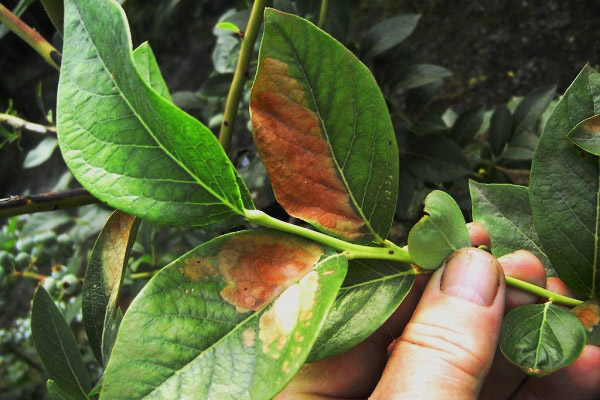
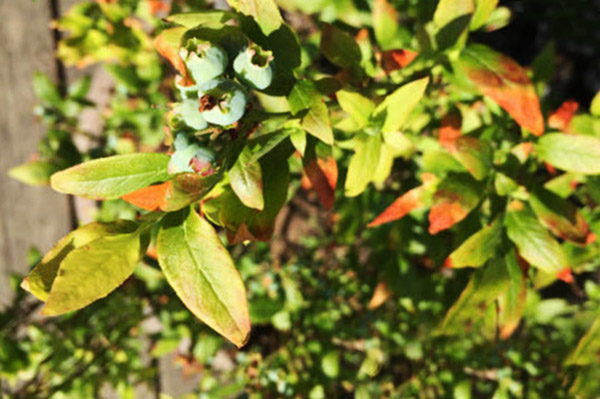
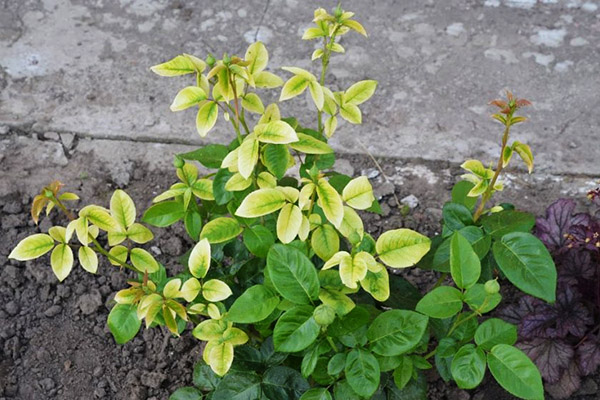
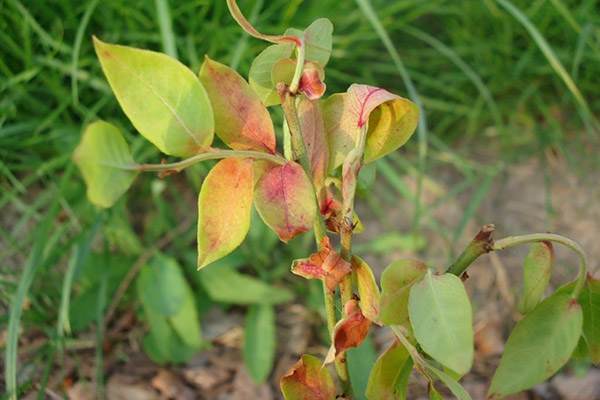

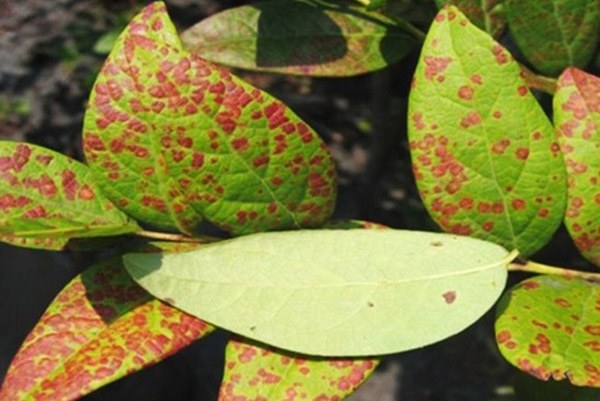


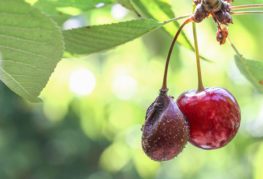
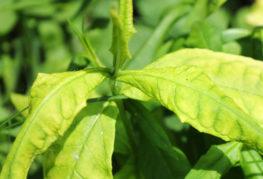
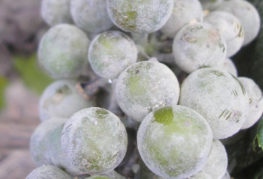
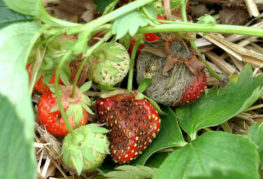
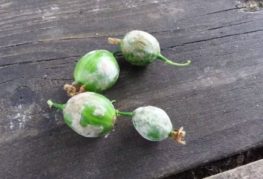
and will be published shortly.